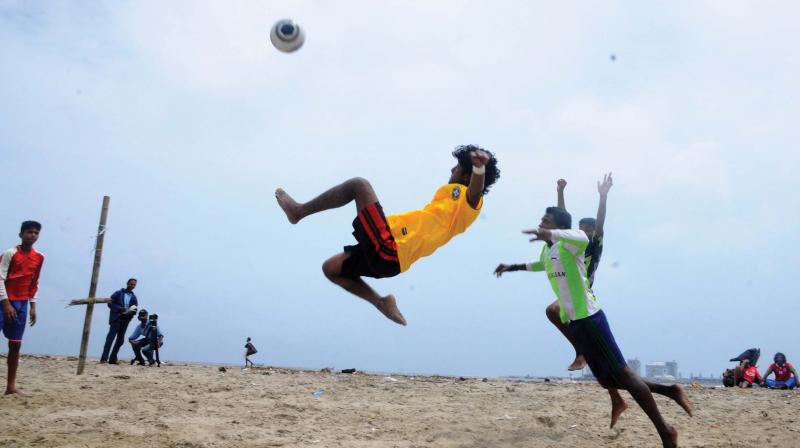Smaller but safer

The arrival of Fifa U-17 World Cup has brought large scale updation to the Jawaharlal Nehru stadium in Kochi. Though the modifications have reduced the venue’s capacity to less than 42,000, the organisers claim that it is safe and has set a standard for sports infrastructure in the state
Kochi: For the record, not every meme is to be taken on face value, least of all if it is on football. For example, a collage that compares the jam-packed Jawaharlal Nehru Stadium in Kochi during an ISL match with a buzzing Signal Iduna Park, home of German football giants Borussia Dortmund, could only be treated as a statement of respect for the passionate Kerala Blasters supporters and never on account of the stadium’s envious capacity.
While the idea of countless passionate souls jumping the terraces, creating ripples of yellow to a broadcaster’s delight is stuff of goosebumps that can be shared and retweeted on social media, the same was termed as “scary” by the organisers of the Fifa U-17 World Cup.
Five months after ISL-3 final was played between Kerala Blasters and Atletico de Kolkata with an official attendance of 54,146 (and unofficially in excess of 65,000), the stadium has undergone a colossal makeover.
But the renovation has come at a cost. The stadium can no longer be compared to iconic football grounds around the world, nor is it likely to evoke goosebumps like before because the Local Organising Committee of the World Cup has reduced the stadium’s capacity to 41,748.
“We need to be more structured and organised and that is why for us it was so hard to make this decision to reduce the capacity,” said tournament director Javier Ceppi. “But now we can say this is a safe facility and that we can host both teams and spectators here,” he added.
The LOC feels that the modifications done at the venue, though it has forced them to cut down on the number of seats, have made the venue better and raised the standard of sports facilities in the state.
“The venue is now sparkling new and it’s a gift for the sports lovers of Kerala,” says A.P.M. Mohammed Hanish, Kerala’s nodal officer for the World Cup.
“Since the stadium was opened in 1996 there was no infrastructure upgradation done here, but with about '40 crore pumped in there is no area in the stadium that is left untouched.
“The concept of competition area was new to us and now we have it, the fire-fighting system was nonexistent but we have a state-of-the-art mechanism in place at present, the entire water supply has been changed and it is incredible that there wasn’t a Kerala Water Authority connection before,” said Hanish.
Nearly 200 toilets, including 164 all over the ground and the rest inside the competition area have been redone. Moreover, the meticulous nature of seating arrangements done at the stadium is impressive.
“Fifa had insisted that every row of chairs and even the corridors between every set of chairs need to have specific gaps so we had to adhere to that while installing bucket seats in the entire second tier of the stadium,” said GCDA executive engineer Hema.
In 45 days the entire sewage system on the second tier that had completely corroded was re-laid, the organisers have claimed.
“We need to do far more than having 80,000 people here because this is a World Cup," says Ceppi.
"Imagine, it would’ve been easy for somebody to just light a match with all the fuel tanks below and we would’ve had a tragedy. But the contents of all the shops will be removed and it will not be the same like before.
"The single most important thing at a football match apart from the players is the spectators and their safety and that cannot be compromised,” Ceppi said.

